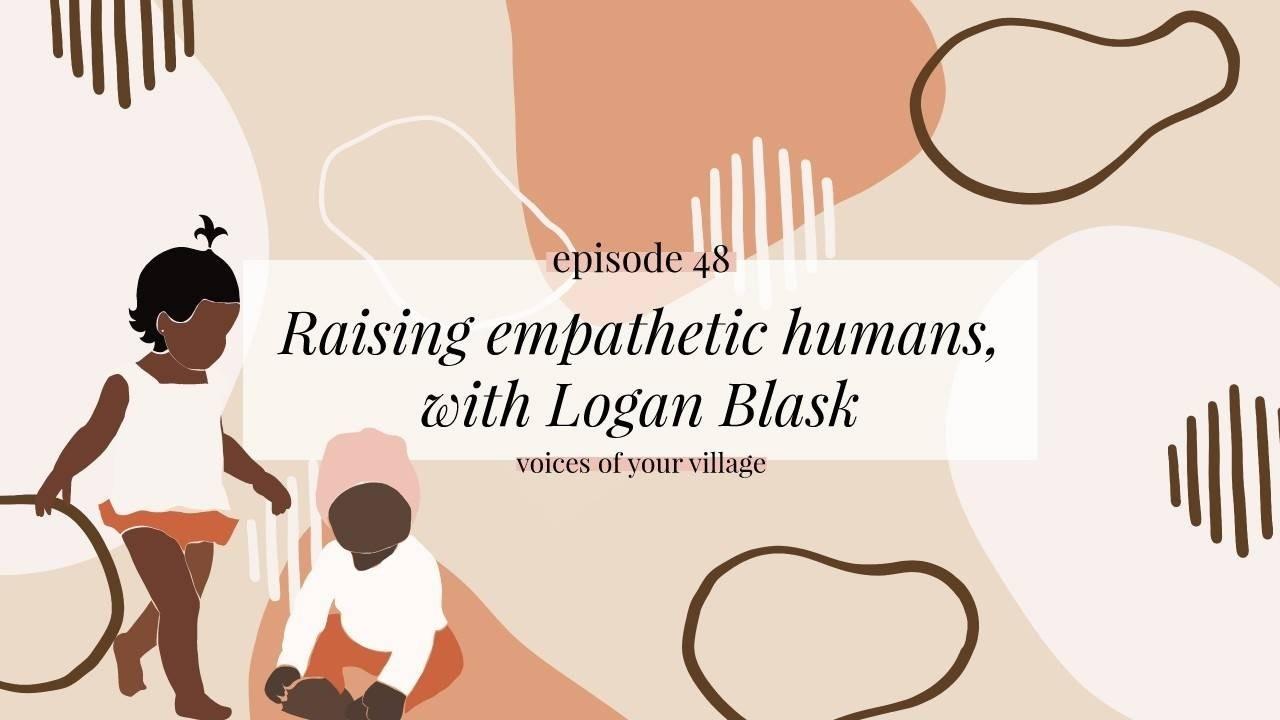Raising empathetic humans, with Logan Blask

This week I was thrilled to chat with my incredible sister-in-law Logan Blask (again)! You may remember her from episode 26, our most downloaded episode, where we dove into raising emotionally intelligent kiddos. This week we are diving into empathy and how to model and instill empathy in our tiny humans.
Sibling rivalry. Logan shared that her kids are totally allowed and encouraged to disagree, have their own opinions, thoughts, etc. However, physical aggression has been a hard no from the start. They have a family guideline of “hugs, handshakes, and high fives” as appropriate physical touch. When the twins have a disagreement, they are expected to talk it out and articulate their feelings. This was something that was modeled and taught in their household from the start. Logan and Brian also model appropriate conflict resolution in front of the twins to encourage that type of emotionally intelligent approach. Sometimes naming feelings and talking about emotions can feel foreign but Logan shares that after a while, it becomes like second nature and is imperative to helping kids become connected and empathetic.
Sharing. This can be a tough one for folks, especially because the way one family approaches it might be totally different than another family. Turn-taking can be a great solution. There isn’t an expectation that the person using the toy has to immediately appease the other person and give it up. The twins use the term “I’ll be next” to articulate that they want to have a turn when the other person is done. Logan has also found that putting away one or two extra special toys before a playdate can really help to mitigate some of the sharing challenges that sometimes arise. The expectation is that they can put away the extra special toys but everything else is fair game.
Pre-teaching. This is a tool she uses a lot with the twins. In the car on the way to a playdate, or school or a sports game, she may talk about possible scenarios and ask the twins how they might handle something. This means guiding them as much or as little as needed to help them problem solve. She also talks about situations after they happen too. She shares that real-life moments make really great teaching opportunities and she likes to use them to help guide the twins to handle the situation effectively if it comes up again in the future.
We also dove into other tools that Logan uses for the twins. She sometimes gives the kids phrases they can use in certain difficult situations when they are flustered. As they work through those situations over time, they are able to figure it out on their own. One of my favorite tools? Complimenting children A LOT. I aim for a 4:1 ratio, for every one negative thing they hear about themselves, I want to build them up with four positive things. If they show empathy, or if they’ve made a positive change, Log compliments them. She shares that her kids thrive on it and it becomes a sort of self-fulfilling prophecy where they believe that they are indeed empathetic or helpful or a good friend etc. and so they are intrinsically motivated to continue those behaviors. “You’re one piece of the puzzle” is a phrase that Logan uses a lot with the twins. It helps them see the bigger picture, and to think about a situation beyond their perception of it. This helps with peer-to-peer problem solving and cultivates a willingness to meet in the middle and find a solution that works for everyone.
We ended our discussion by talking about concrete examples of instilling empathy at different ages and stages. It’s never too early to start and being present and mindful is crucial. Logan shares that she gives Spencer and Emerson individual time to talk, with her complete undivided attention. This opens up a safe space for emotion processing and problem-solving. Taking advantage of teachable moments has been a huge tool for Logan too. This looks different at different ages but for example, a one-year-old taking a toy from a peer is a teachable moment. A two-year-old screaming in the store when they don’t get a piece of candy is a teachable moment. Books can be a great tool, too. There are books specifically on empathy, but almost any book can be used. Something as simple as talking about how the characters in the book may be feeling can open up the door to learning moments (check out the Seed & Sew emotional development book list and Pinterest account for some book recommendations). As adults, we can also reframe and verbalize our own reaction to things to help model that for our kids.
All of these small moments and opportunities that pop up each day can be a huge part of teaching and modeling empathy. Remaining present and emotionally available for our kiddos is important too. It isn’t one major change, but several smaller, intentional changes that really make a difference.
Emotional Development Book List
Seed & Sew Pinterest account
